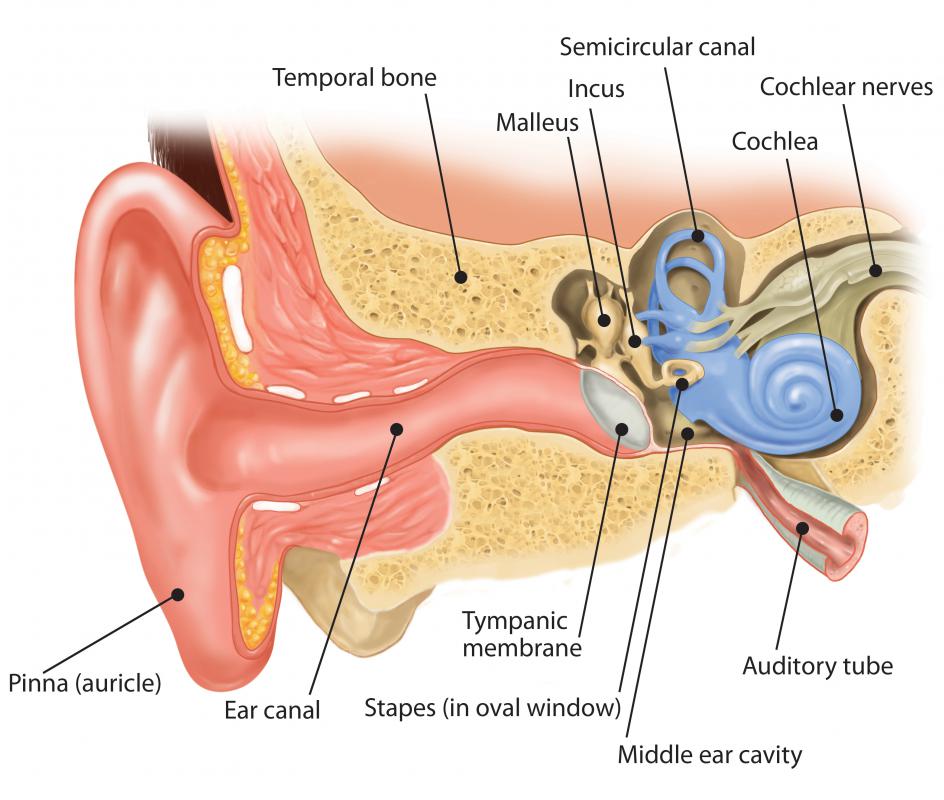At WiseGEEK, we're committed to delivering accurate, trustworthy information. Our expert-authored content is rigorously fact-checked and sourced from credible authorities. Discover how we uphold the highest standards in providing you with reliable knowledge.
What is a Punctured Eardrum?
Punctured eardrum, also called ruptured eardrum, occurs when the tympanic membrane separating the outer and middle ear becomes torn or broken. This type of ear injury can cause sudden ear pain, hearing loss, tinnitus, and vertigo. It can also increase the risk of middle ear infection. Punctured eardrum is often the result of ear injury or sudden changes in atmospheric pressure. Most eardrum injuries can heal without surgical intervention, though tympanoplasty, or surgery to patch the tympanic membrane, can restore function to severely damaged eardrums.
Eardrum perforation or puncture can occur as the result of an ear infection. Pus and other fluids can accumulate behind the ear drum, eventually putting enough pressure on the membrane to rupture it. Loud noises or trauma, such as that caused by blows to the head, can cause punctured eardrum. Sudden changes in atmospheric pressure, such as those normally experienced by airplane passengers, can cause eardrum rupture. Foreign objects, including cotton swabs, inserted too far into the ear canal, can also puncture the eardrum.

The first symptom of a punctured eardrum is often immediate and extreme pain in the ear. Blood, pus, or other fluid may drain from the ear. Hearing loss and tinnitus, or a buzzing noise in the ear, can occur. Vertigo, or dizziness, is another common symptom of ear injury.
A punctured eardrum can leave the middle and inner ear vulnerable to infection. If liquid or debris is allowed to penetrate the middle ear through the punctured eardrum, infection can occur, causing pus to begin accumulating in the middle ear and draining from the ear canal 24 to 48 hours after the ear injury occurs.
Eardrum rupture can usually be diagnosed by a visual examination of the middle ear. Doctors typically use an instrument known as an otoscope to perform this visual examination.

Treatment for a punctured eardrum is often relatively straightforward. Patients are generally asked to keep the ear dry and clean. Cotton balls can be placed in the ear to prevent liquid or debris from entering the middle ear. Patients are generally advised not to swim or submerge the head in water. If the patient is suffering from an ear infection, oral antibiotics and ear drops may be prescribed to treat it.

Most perforated eardrums heal within about two months. Tympanoplasty, a surgical procedure, can be used to repair the most severely punctured eardrums. The hearing loss, tinnitus, and vertigo often caused by eardrum rupture are almost always temporary. If the ear is or becomes infected, however, the risk of permanent hearing loss is usually increased.
AS FEATURED ON:
AS FEATURED ON:













Discuss this Article
Post your comments